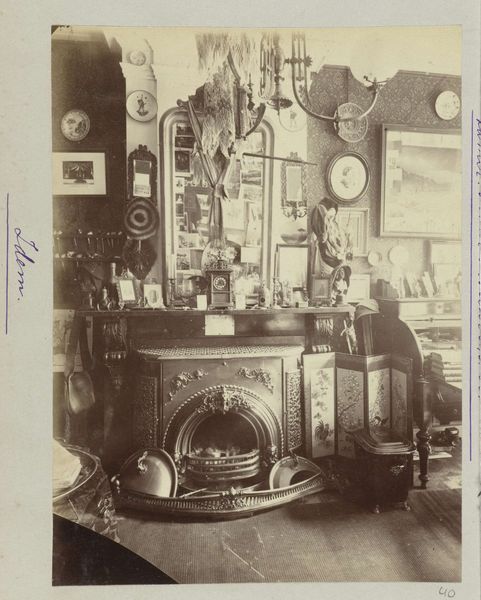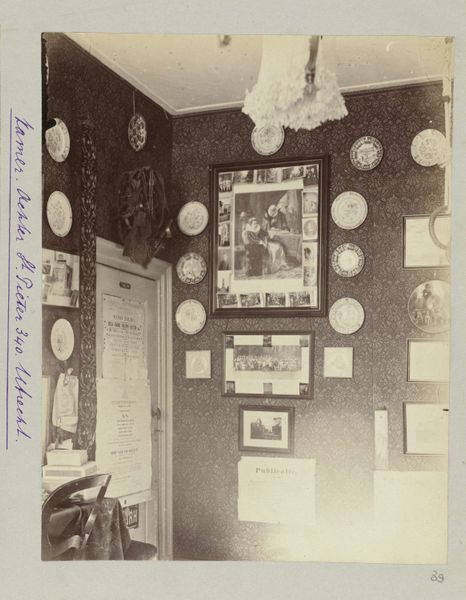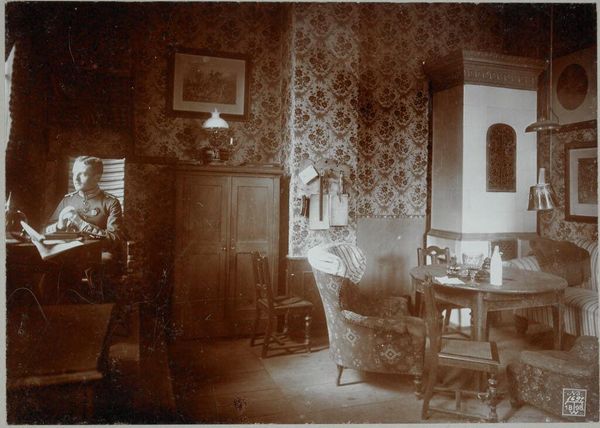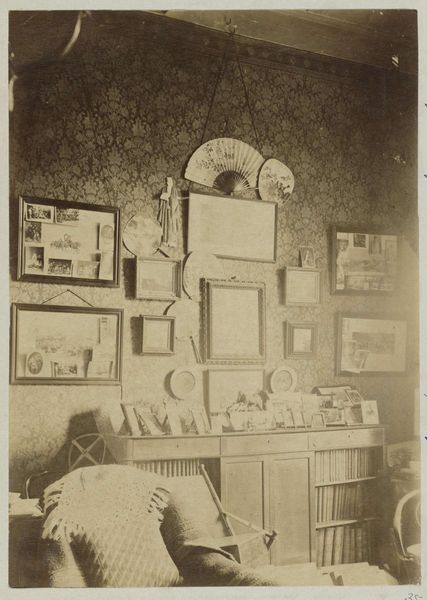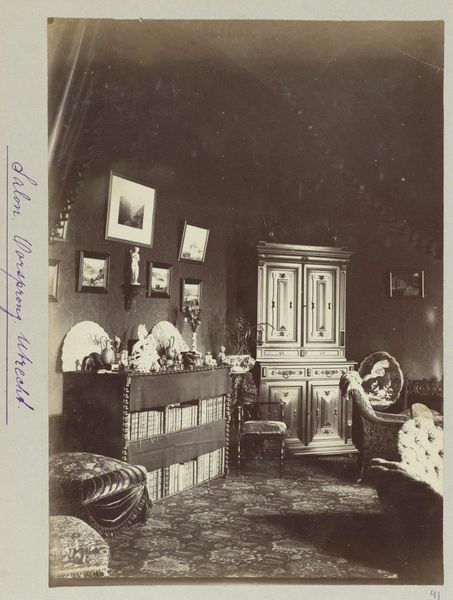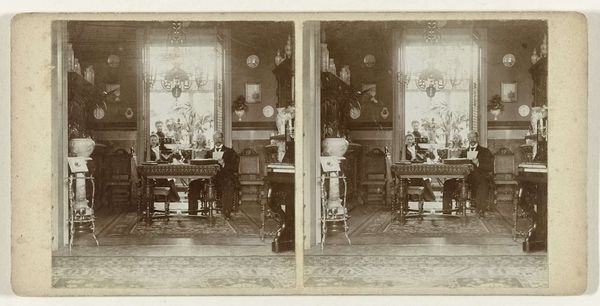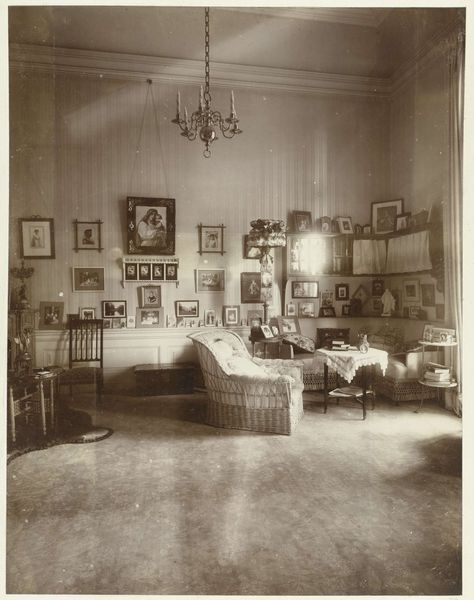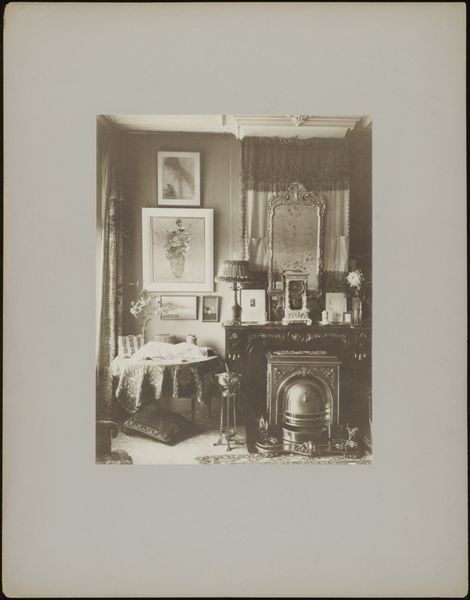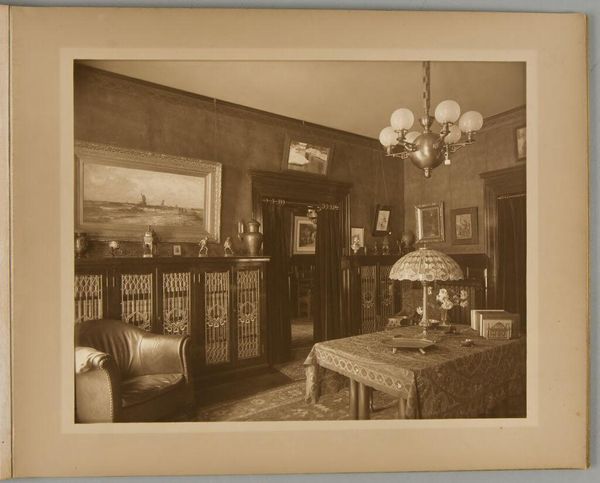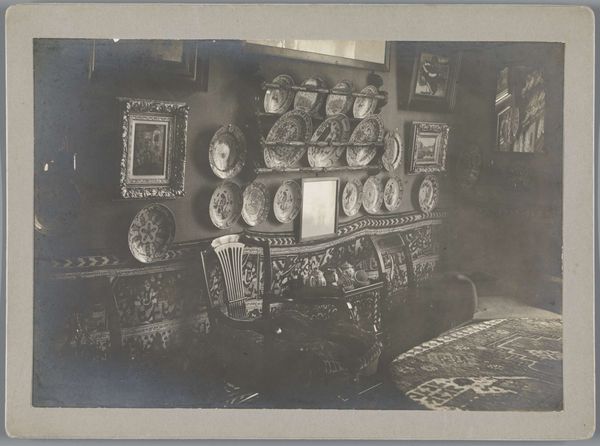
Student Rooms of Pauw van Wieldrecht’s Friends in Utrecht and The Hague 1889
0:00
0:00
henrypauwvanwieldrecht
Rijksmuseum
Dimensions: height 170 mm, width 124 mm, height 302 mm, width 250 mm
Copyright: Rijks Museum: Open Domain
Curator: I’m struck by the intimacy and history in this image. What do you first notice about it? Editor: It feels so deeply…brown. Like sinking into a memory encased in sepia. The details are incredible though, a time capsule filled with objects that suggest a rich inner life. It also suggests domesticity, which in the art world is always "loaded." Curator: It truly is a fascinating window. This is a gelatin-silver print photograph, dating back to 1889. The full title is "Student Rooms of Pauw van Wieldrecht’s Friends in Utrecht and The Hague," providing a glimpse into the social circles of Henry Pauw van Wieldrecht. Editor: Friends' rooms, huh? Almost like a social study, staged for the camera, which really throws a shade on "friendship" right off the bat. I suppose it captures an essence of Romanticism too, in that idealized, posed stillness. Like an early version of #roomgoals! Curator: Exactly. The objects meticulously placed on the mantelpiece—the array of pottery, pictures, and books—are all coded symbols. A cultural landscape is rendered personal here. Editor: Look at that tiny stove! It seems more symbolic than functional. Did they huddle around that thing, plotting romantic schemes in their velvet jackets? Curator: Or positioning themselves for social advantage! Each object acts as a clue, informing the narratives we construct. These visual cues reflect the spirit of an era. Editor: Do you get the sense, though, that these aren’t the uninhibited, rumpled spaces of genuine friends? There’s a stiffness to it, almost as if these rooms have been curated before the camera arrived. A pre-Instagram moment. Curator: Indeed! There's the inherent contradiction: staging an informal space to make a specific statement. But that tension reveals so much about how they wished to be perceived, and what values they chose to embody. Editor: A perfectly preserved bourgeois fantasy. Maybe it should be viewed through the lens of that tension, an ironic, or perhaps a self-conscious document. Curator: Perhaps, then, our journey through these photographed spaces is less about simple representation and more about exploring those fascinating gaps between performance and authenticity. Editor: Nicely put! I am reminded not to take photographs at face value. Every image, and now this artwork, represents a chosen reality. Thanks!
Comments
rijksmuseum about 2 years ago
⋮
Pauw van Wieldrecht sometimes took part in photography exhibitions. The Rijksmuseum owns around four hundred of his photographs and various albums. The amount of work preserved is more than that of any other amateur of the late 19th century.
Join the conversation
Join millions of artists and users on Artera today and experience the ultimate creative platform.
